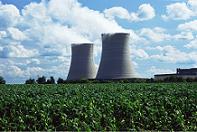Ethanol: A Greener Source of Fuel
 This section gives a brief introduction to the politics and the
history of ethanol fuels in Canada and the United States.
This section gives a brief introduction to the politics and the
history of ethanol fuels in Canada and the United States.
In the USA and Canada over the last decade, ethanol has become increasingly popular as a method to reduce both greenhouse gases and the dependence on foreign sources of oil. Many politicians and scientists back ethanol as an environmentally friendly alternative to gasoline and most studies have shown that it reduces harmful emissions of chemicals such as carbon monoxide, carbon dioxide, particulate matter and methane [1].
The idea of using ethanol as a fuel is not very new when compared to hybrid vehicles or hydrogen fuel cell technology. In fact, Henry Ford, in creating his Model-T, assumed that ethanol would be the major source of fuel for the automobile. However, cost constraints forced ethanol out of the spotlight until recently when gas prices soared and environmental issues became more pressing [2]. Ethanol has been the subject of several ad campaigns both in Canada and the USA, the video below was created by the Canadian Renewable Fuels Association in 2006. However, not everyone is in agreement about ethanol being a viable alternative to gasoline.
This video is reproduced with permission from both the creators and YouTube. Please be patient while YouTube loads the video. Audio is required. Active-X may need to be enabled for the video to work properly.
Can you really make ethanol from fish? Well, lets see how ethanol is made to find out.